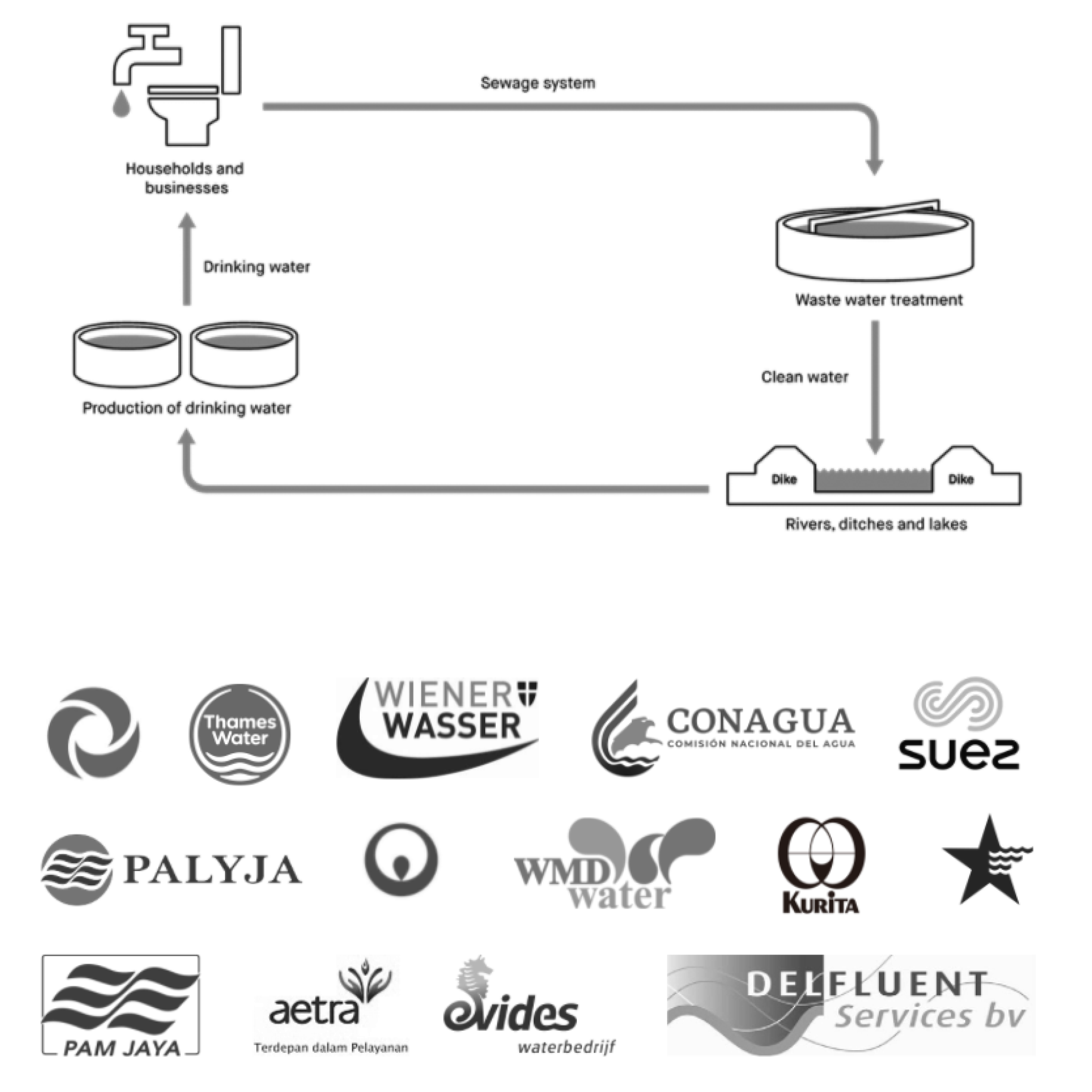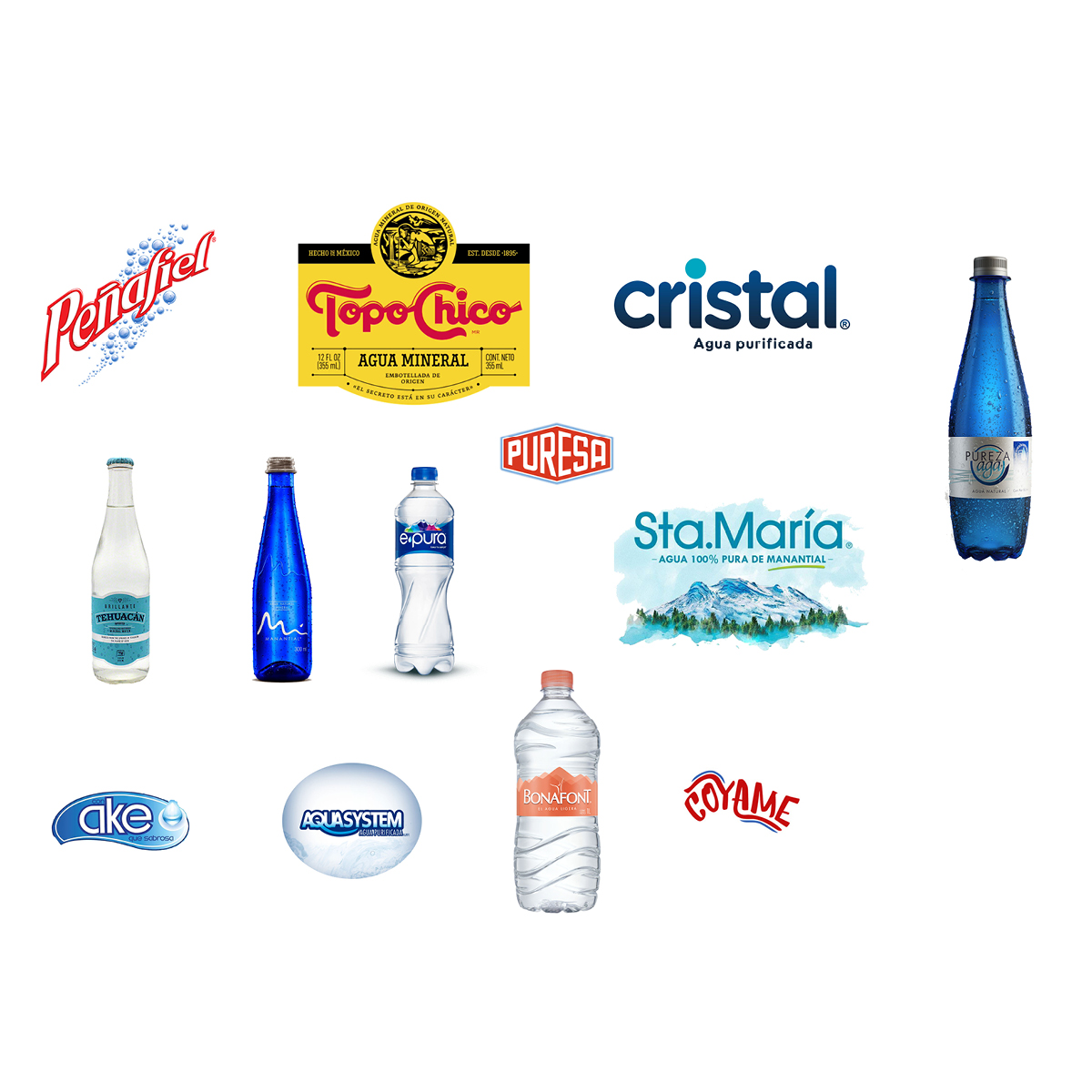
Drinking water company usually covers a part or whole water cycle of a city. In the case of Vienna, Wiener Wasser covers the whole water cycle with 100% spring water from the Lower Austrian-Styrian Alps. Wiener Wasser is a part of the municipal department in Vienna responsible for clean water supply, maintain and control the quality of the water and pipelines, manage public sewage systems, wastewater treatment, and education around drinking water.
Another public drinking company owned by the municipality such as Waternet in Amsterdam also covers similar responsibility to supply clean water and collection of wastewaters. While in another Dutch regions such as Delft, have Evides Waterbedrijf to manage their drinking water supply and Delfluent to manage sewers and wastewater treatment.
In London, a similar service is provided by a private drinking company called Thames Water. Thames Water is responsible for the public water supply and wastewater treatment in most of Greater London. The company has been through several takeovers by companies such as RWE (German utility company) and Kemble Water Holdings Ltd (Consortium).
Another type of drinking water service could be provided by the partnership between the public and private companies. For instance, Jakarta drinking water is being distributed by private companies in form of a 25-year concession agreement, in which both private companies (Palyja and Aetra) have to achieve universal service coverage and a reduction of water losses to 20 percent at the end of the concession period. (initially 46% and 61% respectively in 1998). Also, the municipality or government normally will have to buy all the shares from private companies at the end of the concession period.
In 2019, the Austrian Parliament passed a law enshrining the protection of drinking water resources in the Austrian constitution. Water privatization in Austria is thus henceforth unconstitutional.
← Back to Lexicon
Cycle of water diagram ; various logo of water company
Sources: Waternet. “Who We Are.” Wereld Waternet. Accessed May 2, 2021. https://www.wereldwaternet.nl/en/about-world-waternet/whoweare/.
- “Water Privatization.” Wikipedia. Wikimedia Foundation, March 12, 2021. https://en.wikipedia.org/wiki/Water_privatization.
- “Wiener Wasser.” zur Startseite der Stadt Wien, March 16, 2021. https://www.wien.gv.at/wienwasser/.
- Waternet. “Our Service Area.” Waternet. Accessed May 2, 2021. https://www.waternet.nl/en/about-us/our-service-area/.
- “Water Privatisation in Jakarta.” Wikipedia. Wikimedia Foundation, March 14, 2021. https://en.wikipedia.org/wiki/Water_privatisation_in_Jakarta.

There are almost 6,000 bottled water manufacturers in Mexico, with 10 large consortiums, 150 large companies, 300 medium companies, 600 small companies, and 5,000 micro-companies in the mix. On top of that, almost 85% of bottled water in Mexico comes from micro bottlers using purified water. However, the trend of premium waters from natural sources has recently been gaining ground.1
The major bottled water companies in Mexico have established large scale networks regarding national distribution, sales support as well as promotional and advertising campaigns to showcase their brands, whereas the smaller ones operate mostly based on regional components in order to compete in more specific market segments. Regardless the excess of transportation and environmental impacts, the business of bottled water is going mad all-around Mexico and the liquid assets are highly valued. Interestingly enough, almost every one of the larger companies and several smaller ones as well, rebranded their products and profile in the past two years.
The case of Penafiel’s branding, probably the most ubiquitous mineral water in Mexico, is exemplary. “A thick, crystalline, slightly-salty water”, drawn from Citlaltépetl since 1928. Peñafiel’s water is actually the most mineral-heavy out of all the major mineral waters, clocking in at 880 ppm total dissolved solids! Compare that with Topo Chico’s 630 ppm, or even San Pellegrino’s 860 ppm. It’s also got almost three times the Sodium and twice as much Chloride as Topo Chico, making this one of the saltiest (probably the saltiest) mineral water on the market.2 New entries, such as Tehuacán Brillante, with “natural chill and bubble quality not as aggressive as Topo Chico”3 are also moving towards the same direction, trying to claim their share on the market. Is bottled water becoming a thing again?
← Back to Lexicon
The major bottled water companies in Mexico have established large scale networks regarding national distribution, sales support as well as promotional and advertising campaigns to showcase their brands, whereas the smaller ones operate mostly based on regional components in order to compete in more specific market segments. Regardless the excess of transportation and environmental impacts, the business of bottled water is going mad all-around Mexico and the liquid assets are highly valued. Interestingly enough, almost every one of the larger companies and several smaller ones as well, rebranded their products and profile in the past two years.
The case of Penafiel’s branding, probably the most ubiquitous mineral water in Mexico, is exemplary. “A thick, crystalline, slightly-salty water”, drawn from Citlaltépetl since 1928. Peñafiel’s water is actually the most mineral-heavy out of all the major mineral waters, clocking in at 880 ppm total dissolved solids! Compare that with Topo Chico’s 630 ppm, or even San Pellegrino’s 860 ppm. It’s also got almost three times the Sodium and twice as much Chloride as Topo Chico, making this one of the saltiest (probably the saltiest) mineral water on the market.2 New entries, such as Tehuacán Brillante, with “natural chill and bubble quality not as aggressive as Topo Chico”3 are also moving towards the same direction, trying to claim their share on the market. Is bottled water becoming a thing again?
← Back to Lexicon
Mexico bottled water companies.
- http://www.finewaters.com/bottled-waters-of-the-world/mexico
- http://www.bottledwaterweb.com/bottlersdetail.do?k=63
-
https://thebubbleverse.com/review/brands/tehuacan/mineral-water-2